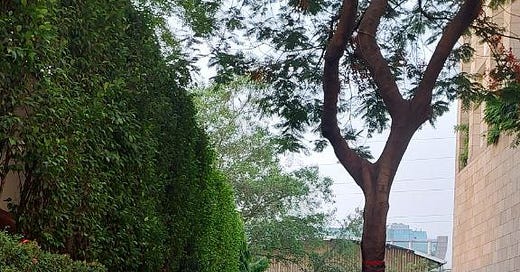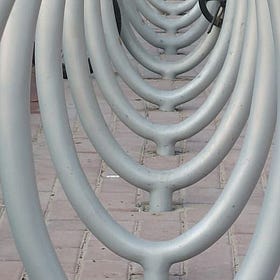Revisiting India's Inequality Debate
Data sourced from private consumer surveys reveals that inequality exists in India, but it has not worsened in the last decade. EPISODE #176
Dear Reader,
A very happy Monday to you.
Recent statements by former Congress party President Rahul Gandhi drawing from his party’s manifesto and the just sacked head of the overseas cell of the Congress Sam Pitroda, put the spotlight on the problem of inequality in India. Both Gandhi and Pitroda contend that inequality had worsened in the last decade and that if elected to power the Congress party would undertake a redistribution of wealth.
This week I will unpack the claims at the core of this debate. To test for its empirical veracity, I ran this claim past Rajesh Shukla, CEO of People Research on India's Consumer Economy (PRICE branded as ICE 360°).
Using the proprietary data generated by surveys conducted by ICE 360°, Rajesh uncovered two central findings:
Inequality exists in India;
It has improved over the last six decades and not worsened.
The extremely informative conversation with Rajesh will shortly feature in my weekly show on StratNews Global. So watch out for it too.
The cover picture of a colourful offering from mother nature is taken by me during my wanderings around Delhi. Enjoy.
Happy reading.
The Inequality Challenge
As mentioned in the introduction, recent statements from senior members of the Congress party has put the spotlight on the problem of inequality in India. Since they have come in the middle of a very contentious general election campaign, the comments have turned controversial and acrimonious. The resulting noise has turned this into a political slug fest instead of a healthy debate.
To be sure though, this is not the first time that the problem of inequality is being flagged. I recall two previous instances: Once by the Indian Parliament and another by the Supreme Court.
Over a decade ago, ironically when the Congress-led United Progressive Alliance (UPA) was in power, the parliamentary standing committee on finance delivered a stinging critique on the prevailing political economy in its 59th report—Current Economic Situation and Policy Options.
Arguing that majority of the people were being excluded from the growth process, and the gains were accruing to a few, it said (the bold text is my doing):
“In the context of the economic growth and per capita income, the committee is concerned to note the emerging ever-widening gap between the rich and poor and the increasingly disproportionate distribution of assets in our country. It is being observed that the purchasing power is getting concentrated in the hands of a few, whereas the majority is stuck below the expenditure curve."
Similarly, a year earlier, the Supreme Court of India flagged the problem of inequality and blamed it for the naxalite or red terror problem. Justice Sudershan Reddy in his order on Salwa Judum (a vigilante outfit sponsored by the then Chhattisgarh government) said (the bold text is my doing):
“That violent agitator politics, and armed rebellion in many pockets of India have intimate linkages to socio-economic circumstances, endemic inequalities, and a corrupt social and state order that preys on such inequalities has been well recognized. In fact the Union of India has been repeatedly warned of the linkages."
So, the challenge of inequality is not new. It exists and has been flagged in the past. The question is whether it has worsened, particularly in the last decade as alleged by the Congress party in its election campaign.
Sidestepping the rhetoric, I opted to run this claim past Rajesh Shukla, CEO of PRICE (People Research on the Indian Consumer Economy). Through their surveys, PRICE has generated tomes of proprietary data, sufficient to create a socio-economic profile of India, and test for claims like the challenge of inequality.
Empirical testing of such political claims are important not just to examine their veracity. If indeed the problem exists, then it is imperative for the public policy framework to respond adequately. Unaddressed, it can well snowball into a social and political challenge that could soon spiral out of control. Look around the world and you know what I mean.
The Findings
Rajesh actually managed to go back decades by tapping into surveys conducted by the National Council for Applied Economic Research (NCAER) and updating it with recent surveys by PRICE. There were two broad conclusions:
Inequality does exist in India;
It has however improved and not worsened over the last six decades.
The graphic above sums up the arc of inequality in India. What Rajesh has done is to take the proportion of the shares of the top 90th and bottom 10th percentiles in household disposable income to give us a measure of inequality.
It shows us that the ratio dropped from over 20 in the 1960s to 11.2 in 2015-16. Thereafter there is a huge bump in 2020-21—the phase of the covid-19 pandemic, which forced a shutdown of the Indian economy causing severe devastation—reversing the gains established over decades.
What is fascinating is the recovery that followed with the ratio dropping to 12.4 in 2022-23. This only confirms that the 2020-21 bump was a clear outlier. More importantly, the rebound is an outcome of the success of the social welfare spending—including the programme for distribution of free food grains to 800 million people—to protect livelihoods from the devastation of the pandemic.
Ironically for the Congress party, this debate over inequality has put the spotlight on the stellar success of the social welfare spending undertaken by the Bhartiya Janata Party (BJP)-led National Democratic Alliance (NDA) in the last decade.
To a large degree this success is presaged on the trinity of Jandhan-Aadhaar-Mobile (JAM) that helped create a kind of economic GPS for the union government to identify a beneficiary.
As a regular reader you are aware that I have dwelled on this theme often. Not only has this saved the national exchequer nearly Rs3 lakh crore by eliminating ghost accounts and leakages, it has also caused a dramatic reduction in poverty. Sharing the link to a previous newsletter on this theme, in case you wish to recap.
ESCAPING POVERTY
Dear Reader, A very Happy Monday to you. Last week the United Nations Development Programme (UNDP) released its poverty numbers for 2022. It showed that worldwide the battle against poverty had progressed. But the bad news was that 1.2 billion people continued to live in poverty. This number could well be revised upwards in the aftermath of the unpreceden…
The bad news of the empirical test conducted by Rajesh is that inequality exists in India. But the good news is that it has declined.
More importantly, the abnormal bump in inequality on account of the covid-19 pandemic was reversed through a reinvention of social welfare spending by ensuring targeting through the use of JAM.
While this is noteworthy, the big question is as to how quickly can India transition to a sustainable means of fighting inequality. Social welfare spending as a social safety net is an excellent intervention, but it cannot be the means to teach people how to fish.
Recommended Viewing/Reading
Sharing the latest post of Capital Calculus on StratNews Global.
A few weeks ago, Nandan Nilekani, the man who spearheaded the ideation and rollout of the game changing Aadhaar, the 12-digit unique identity issued to 1.4 billion Indians, co-authored a fascinating paper for the Geneva-based Bank for International Settlements—the think tank for central banks. If you recall, I did a newsletter on the topic.
It is on the next innovation—Financial Internet or Finternet— which will integrate global financial systems. At present they operate as silos within respective sovereign borders. Nilekani is proposing they be interlinked by establishing a common protocol that will enable the mantra of interoperability—wherein it does not matter which financial system you or anyone else uses, all of them can talk to each other.
Imagine the power the user will wield in this system, including for cross-border transactions. To walk me through this game changing proposal StratNews Global I spoke to Rahul Matthan. He is a partner at Trilegal and has worked closely with the idea of the Finternet.
Sharing the link below. Do watch and share your thoughts.
Till we meet again next week, stay safe.
Thank You!
Finally, a big shoutout to Surendra, Rajit, Premasundaran and Aashish for your informed responses, kind appreciation and amplification of last week’s column. Once again, grateful for the conversation initiated by all you readers. Gratitude also to all those who responded on Twitter and Linkedin.
Unfortunately, Twitter has disabled amplification of Substack links—perils of social media monopolies operating in a walled garden framework. I would be grateful therefore if you could spread the word. Nothing to beat the word of mouth.
Reader participation and amplification is key to growing this newsletter community. And, many thanks to readers who hit the like button😊.





Anil
Interesting but challenging subject you have chosen this week to write about. We inherited marked and sharp inequality from the British Raj ! Since then markers for inequality have fluctuated . The markers have themselves undergone changes in definition causing further chaos in accurate measurement of inequality.
Presently to measure inequality it may be necessary to take into account access to public goods and services as well. One cannot ignore availability of digital infrastructure, means of communication and ease of transportation ! I think there is marked improvement in the distribution of such intangible assets much beyond than what can be assessed from income!
Best regards
Dear Anil
Inequality is something which has always existed in India, as far as I know. Even during the British rule, Indians who were rich, went abroad for studies and mastered English were far superior in the social standing. The Britishers probably only communicated to them and through them to the poorer Indians. The poor multitude who did all the menial jobs and were ignored by all.
One hoped that post Independence there would be more equality. Thanks to several corrupt politicians, that never happened. We kept reading in Economics books that The rich got richer and the poor got poorer. It seemed to be a way of life. Garibi Hatao slogans could be heard at the time of elections and then they died a natural death till the next elections. There are still so many poor and homeless people. I had read an article in the newspaper recently where they had interviewed homeless people who featured in the voter's list. Most of them were disillusioned because five years back the politicians had promised to provide shelters to them. Those very politicians had gone canvassing this time around as well. With the same promise!
I think it's the timing of raking up this issue of inequality which is relevant. The Opposition is looking for any issue even if it means flogging a dead horse. What they hadn't realized is that inequality had actually reduced thanks to the welfare benefits actually reaching the correct beneficiaries. One is now atleast on the correct track to reduce inequality. That's a great achievement worth applauding.